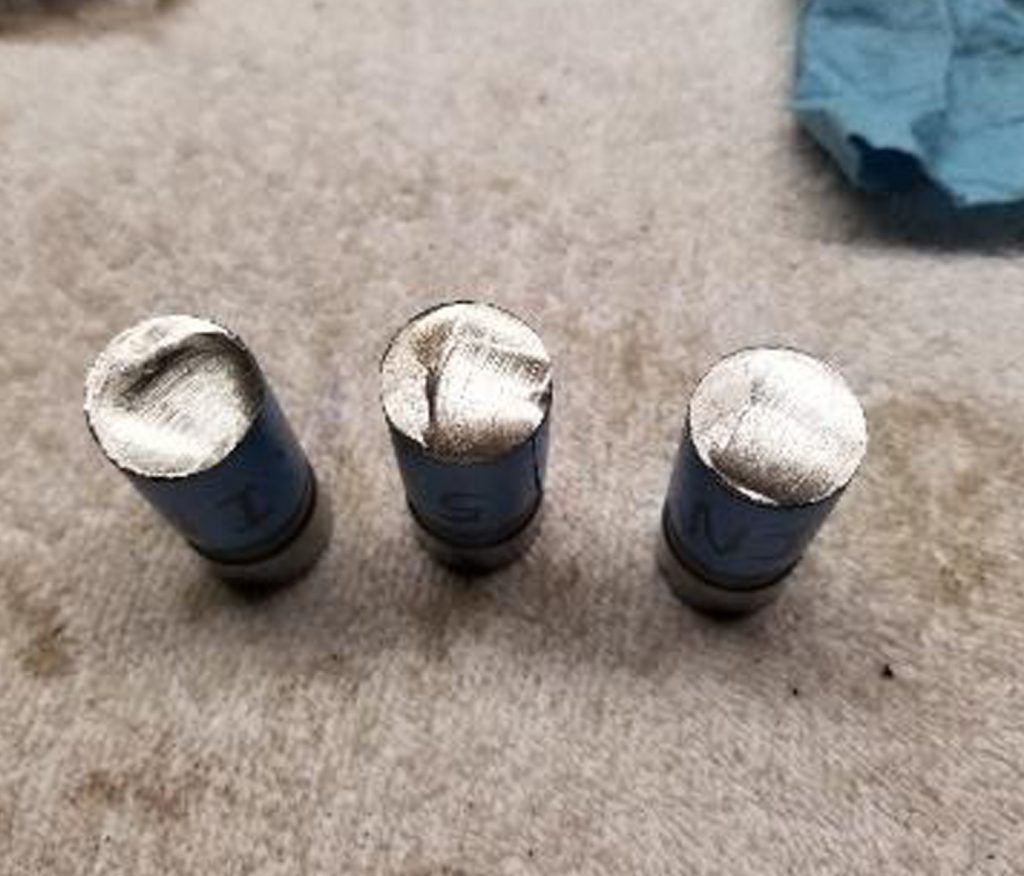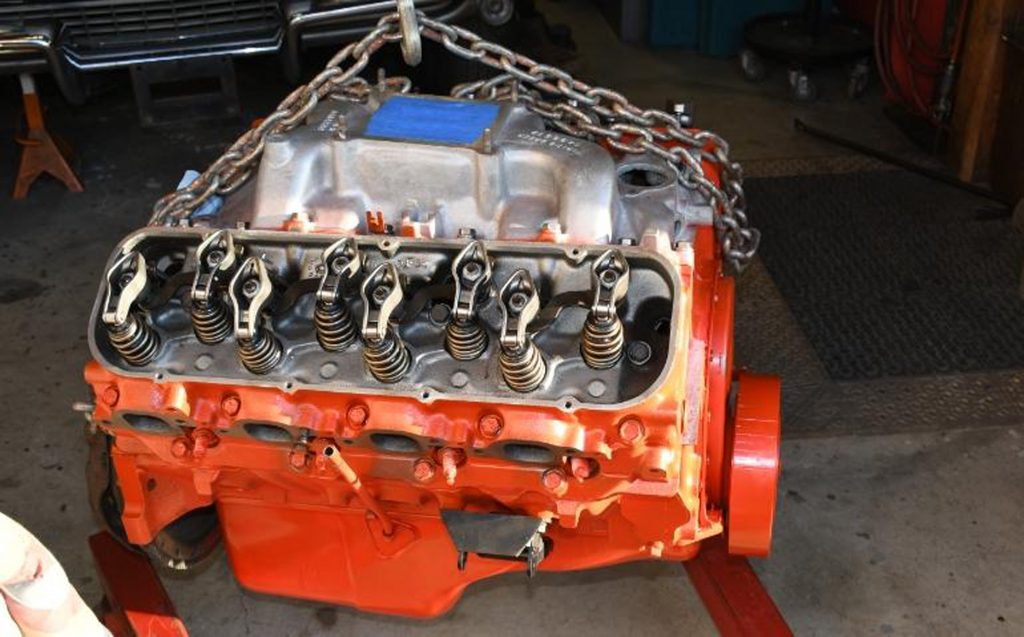How Do You Know if Your Hydraulic Camshaft Break in Worked
I take a survivor '66 Corvette 427. I selected the Factory Muscle solid flat tappet cam as I was trying to stay as true to the original build as possible. I am searching for a solution due to a cam/lifter failure during initial break-in. Not too many people take proficient things to say about the flat tappet cams bachelor today, and several have suggested using a hydraulic roller instead. I really don't want to spend the extra coin on an entirely new hydraulic roller valvetrain but I also don't want to lose another cam. The jury is still out on how much metallic went through the remainder of the engine. Practice y'all accept any recommendations? I'd appreciate your assist.
J.C.
Jeff Smith: It appeared from J.C.'s email that he would adopt to stay with the flat tappet cam, but was prepared to go with a hydraulic roller if necessary. We contacted him to obtain more than information in order to properly answer his question. We wanted to find out what valve springs and break-in oil he used and what the break-in procedure was.
J.C.'southward interruption-in process was practiced–he force per unit area lubed the engine before starting and used a loftier-zinc oil, a Valvoline VR1 10W30 racing oil. I call up that the culprit for the lifter failure might be the valve springs. J.C. used COMP Cams' CCA-26120 beehive jump, It would commonly be a nifty choice, simply not during suspension-in with a flat tappet cam. That's because these springs offer a seat load of 155 pounds with an installed height of 1.880 inches, which is a bit too much load for a apartment tappet cam.
Compounding the result is the cam's 0.520 inch intake and exhaust elevator. This creates well-nigh 350 pounds of load on the lifter at maximum lift. This combined load probably contributed to 3 of the cam lobes going flat. Recommended loads for a flat tappet big block Chevy cam during burglary would exist closer to 100-110 pounds of seat load with a maximum peak lift load of 300 pounds or lower.

Many engine builders utilize a dual leap but remove the inner spring earlier starting the engine. That places seat load around 100 pounds for the elapsing of the cam burglary catamenia. One time the cam and lifters are thoroughly seated, the inner springs can be reinstalled. This is more than work, but less than replacing the cam and lifters after a failure.
COMP by and large recommends using the CCA-911-16 jump for its flat tappet cams. This spring is rated at 122 pounds of load at 1.900 inch installed tiptop and 309 pounds at 0.500 inch valve lift. This is substantially lower–14 percent–at maximum lift, which would make things much easier on the lifters.
J.C. provided photos which showed excessive clothing on only three lifters. That means 13 lobes appeared to have survived. This could be evidence that he was right on the edge of this cam surviving the break-in period. Reducing the spring load is an excellent way to ensure the cam will survive the break-in process.
Some other variable was the Valvoline VR1 oil. This is a good race oil with a high 1,300 parts-per-meg (ppm) count for phosphorous and an fifty-fifty college 1,475 ppm count for zinc. The zinc and phosphorous are better known by the term ZDDP, which is an acronym for zinc dialkyldithiophospate. Even so, the VR1 oil also has nigh one,100 ppm of calcium as a detergent. Normally, detergents are a cracking addition to oil because they aid keep the engine clean. Nonetheless, one attribute of detergents that is generally not well known is that they also attempt to clean anti-wear additives like zinc and phosphorous off of the metal parts they are trying to protect.
The all-time oil to utilize during cam break-in is one with high ZDDP levels merely very depression or no detergent. This mode, the ZDDP remains on the cam lobe and bottom of the lifter where it belongs, minimizing excessive article of clothing and assuasive the lobe and lifter interface to create the necessary habiliment pattern.
The quondam mechanics from the 1950s and '60s recommended a 30-weight not-detergent oil for cam break-in on new engines. I'm erstwhile enough to think those days, and I always wondered why (and frankly didn't believe) a non-detergent oil was the all-time choice. Simply at present that I empathize how detergents interact with ZDDP, it is now articulate why these mechanics fabricated this recommendation. It worked!
Oils I think would offering the best risk for a proper break-in would be COMP's Burglary Oil, Driven Racing's Break-in (BR) Oil, and Lucas Burglary Oil. All have sufficiently high levels of ZDDP while minimizing the use of detergents.
We've establish a company called Speediagnostix that has performed a series of tests on new oil to make up one's mind their actual chemical makeup. This sheds light on some oils that have the proper chemic makeup, and also reveals oils that are peradventure fine for a late model engine, but a terrible choice for breaking in a new flat tappet camshaft. The information we've placed in the accompanying chart has come up from this Speediagnostix testing.
We've listed five oils in the second chart to illustrate that looking at just zinc and phosphorous levels does not tell the whole story. For case, COMP'south Hot Rod oil has expert levels of ZDDP, but the calcium level is besides high, which would work confronting the ZDDP during break-in. The Valvoline oil's calcium level is not excessive, but yet in the four-digit range. The Driven Intermission-in Oil has very low detergent levels with loftier ZDDP, a expert combination.
Note that we included an API SN category oil only for comparison. Any oil with high calcium and low ZDDP numbers would be a disastrous choice equally a burglary oil for a flat tappet functioning engine. The trick of using an off-the-shelf diesel oil instead of a dedicated performance oil is no longer a good idea. The CK or the new CJ diesel oils offer very low ZDDP counts.
It's our opinion that changing to a lower spring rate single leap for break-in and using a quality break-in oil such as the ones we've suggested volition let you employ a muscle car-way flat tappet camshaft and reward you with a much better result.
Once the engine is broken in, yous all the same must use a high-zinc oil to maintain the proper lubrication needed for your flat tappet camshaft. If an occasional quart of API SN oil is needed in an emergency like during a road trip that should non be a problem. But you certainly don't want to utilise an API SN oil regularly for an engine like J.C.'southward. You will need ane of these specialty oils to help maintain the apartment tappet cam'south integrity for years to come up.
Recommended Burglary Oil for a Flat Tappet Camshaft Performance Engine
This list includes oil that we have had personal experience with. In that location are likely other oils that will too be successful, but we have non tested them then are not included in this list.
| Description | PN | Source |
| Comp Interruption-In 10W30 | 1590 | Elevation Racing |
| Driven BR30 | 01806 | Summit Racing |
| Edelbrock 30W | 1070 | Summit Racing |
| Lucas 30W Burglary | 10630 | Superlative Racing |
Speediagnostix New Oil Testing
| Engine Oil Additives | Valvoline VR1 20W50 | Comp Hot Rod 10W30 | Driven Suspension-In 15W50 | Pennzoil April SN 5W20 | Chevron CK Diesel 5W40 |
| Calcium | 1,090 | iii,100 | 366 | 2,561 | ane,324 |
| Phosphates | 1,302 | 1,980 | 2,713 | 718 | 771 |
| Zinc | 1,475 | i,950 | ii,090 | 848 | 900 |

Source: https://www.onallcylinders.com/2020/10/02/camshaft-break-in-how-to-ensure-long-life/
0 Response to "How Do You Know if Your Hydraulic Camshaft Break in Worked"
Post a Comment